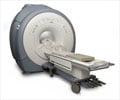Doctors may soon be able to manipulate the MRI images through hand gestures.

The paper was written by Jacob, Wachs and Rebecca A. Packer, an associate professor of neurology and neurosurgery in Purdue's College of Veterinary Medicine.The researchers validated the system, working with veterinary surgeons to collect a set of gestures natural for clinicians and surgeons. The surgeons were asked to specify functions they perform with MRI images in typical surgeries and to suggest gestures for commands. Ten gestures were chosen: rotate clockwise and counterclockwise; browse left and right; up and down; increase and decrease brightness; and zoom in and out. Critical to the system's accuracy is the use of "contextual information" in the operating room -- cameras observe the surgeon's torso and head -- to determine and continuously monitor what the surgeon wants to do."A major challenge is to endow computers with the ability to understand the context in which gestures are made and to discriminate between intended gestures versus unintended gestures," Wachs said. "Surgeons will make many gestures during the course of a surgery to communicate with other doctors and nurses. The main challenge is to create algorithms capable of understanding the difference between these gestures and those specifically intended as commands to browse the image-viewing system. We can determine context by looking at the position of the torso and the orientation of the surgeon's gaze. Based on the direction of the gaze and the torso position we can assess whether the surgeon wants to access medical images."The hand-gesture recognition system uses a camera developed by Microsoft, called Kinect, which senses three-dimensional space. The camera, found in consumer electronics games that can track a person's hands, maps the surgeon's body in 3-D.Findings showed that integrating context allows the algorithms to accurately distinguish image-browsing commands from unrelated gestures, reducing false positives from 20.8 percent to 2.3 percent."If you are getting false alarms 20 percent of the time, that's a big drawback," Wachs said. "So we've been able to greatly improve accuracy in distinguishing commands from other gestures." The system also has been shown to have a mean accuracy of about 93 percent in translating gestures into specific commands, such as rotating and browsing images. The algorithm takes into account what phase the surgery is in, which aids in determining the proper context for interpreting the gestures and reducing the browsing time."By observing the progress of the surgery we can tell what is the most likely image the surgeon will want to see next," Wachs said.The researchers also are exploring context using a mock brain biopsy needle that can be tracked in the brain."The needle's location provides context, allowing the system to anticipate which images the surgeon will need to see next and reducing the number of gestures needed," Wachs said. "So instead of taking five minutes to browse, the surgeon gets there faster."Sensors in the surgical needle reveal the position of its tip.
Source-Eurekalert










